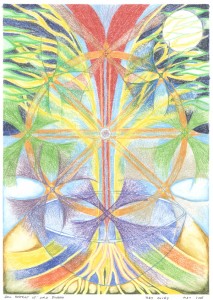
Here are five reasons why people are motivated to make a change in their life:
1) Self-hate – “I’ve got to change because I hate myself so much”. At this level you have to change because the level of dislike that you feel when you look in the mirror or contemplate your behaviour is just no longer tolerable. Think many of the contestants on “the biggest looser” or a junkie who has been told he will die unless he quits his habit. Unfortunately, for many of us it has to get this bad before we can really make genuine change.
2) Self-improvement – Here you can like who you presently are, but you have become hungry enough in evolutionary terms to want to continue to change and transform into something even better. High achievers in any discipline; meditation, sport, sport business or whatever, all have to get to at least this level to be where they are.
3) I want to benefit my circle of influence – Sometimes we can’t bring ourself to change our behaviours just for ourself (maybe we don’t feel we are worth it?), and it takes a sense of responsibility to others to make us change. I saw five minutes of an interview with Pamela Anderson last night. In it she explained how she tolerated violence from her ex-husband until she had kids, when he demonstrated violence to her in their company she left him. Classic example.
4) I want to benefit the world – Here our concern extends beyond our ego and our circle of friends and family to include the whole world as our object of compassionate care. This compassionate care for the Whole has become strong enough for us to actually change ourself and our behaviours.
5) The universe wants to benefit others through me – Here there is to a greater and greater degree a sense in which our actions are a spontaneous expression of something greater than ourself. Rather than us willing the action, the action flows though us from some deeper source. The transformative action feels spontaneous, effortless, choiceless.
In this arrangement, level five is the highest motivation, level one is the lowest. However the key to mastering them all is to understand that level 5 transcends and includes all the others. You can be operating largely from level five whilst at the same time:
- Wanting to change something about yourself you don’t like
- Wanting to get better at something you already do well
- Wanting to specifically help your circle of influence in some way
- Being motivate to make the world a better place
One minute mindfulness of motivation:
For two or three of your actions each day, sit down before hand and think to yourself “Why am I doing this?” Mentally bring to mind the five levels of motivation above (or print off the above summary and have a look at them as you ask yourself the question). How many of these motivations are you currently exercising in your life in an appropriate way? How many of them can you start introducing into your daily actions to deepen and enhance them?
© Toby Ouvry 2010, you are welcome to use this article but you must seek Toby’s permission first. Contact info@tobyouvry.com